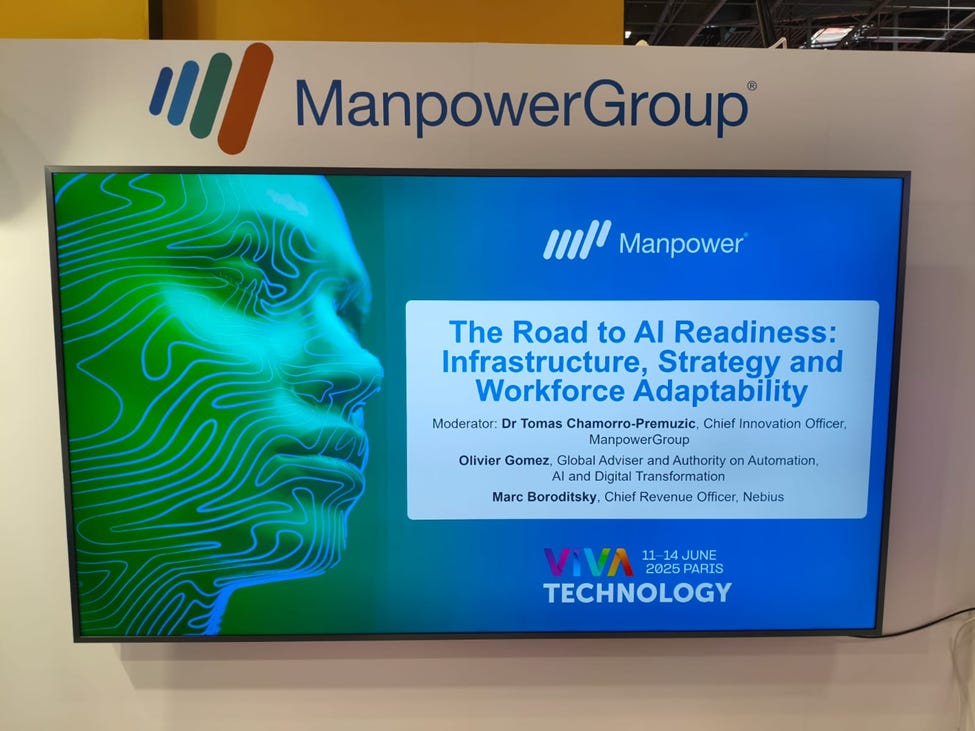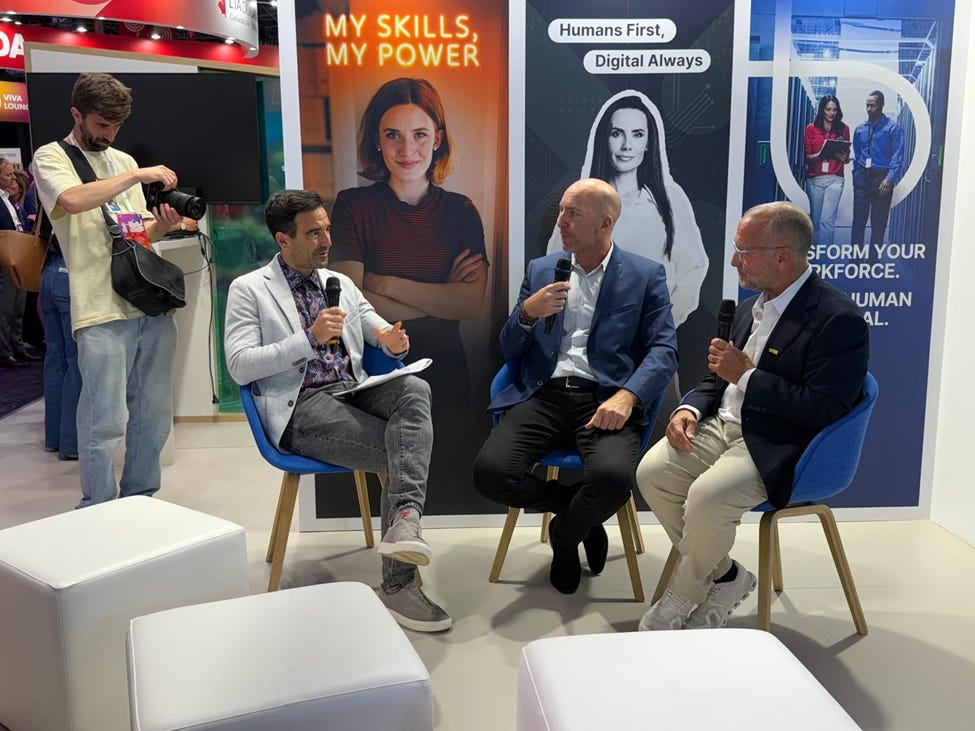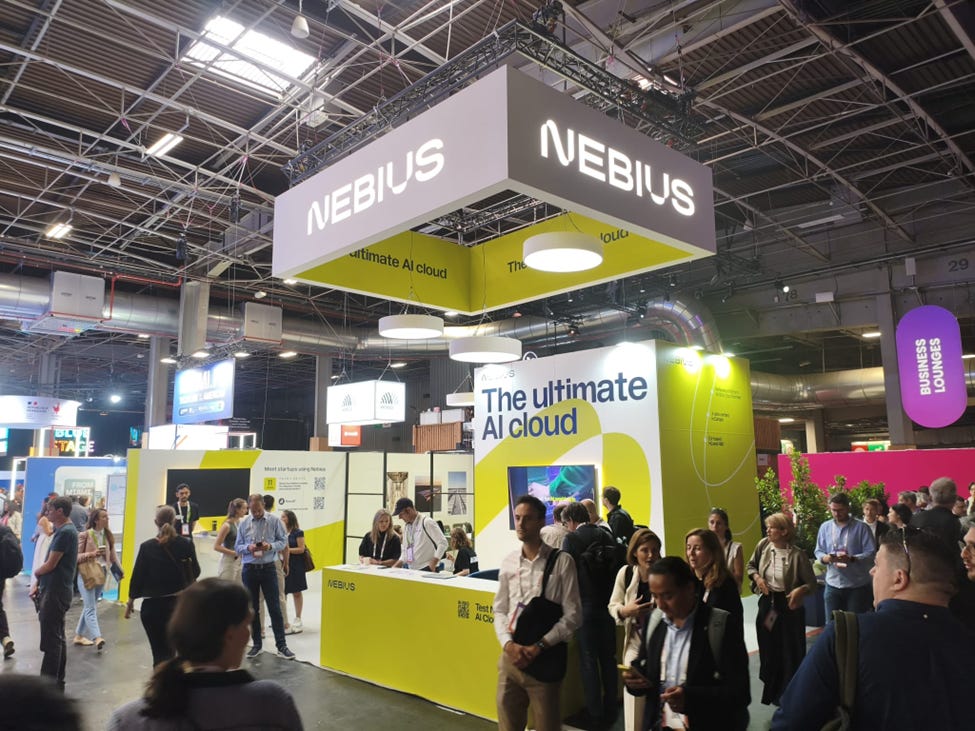The Road to AI Readiness — From Infrastructure to Intelligence
Live from VivaTech x NVIDIA GTC 2025 By Olivier Gomez, CEO @ IAC.AI
There are panels, and then there are real conversations. The kind that doesn’t skim the surface with buzzwords, but dives deep into the hard truth of what it takes to succeed with AI.
That’s what happened when I joined Dr. Tomas Chamorro-Premuzic (Chief Innovation Officer, ManpowerGroup) and Marc Boroditsky (CRO, Nebius) at VivaTech x NVIDIA GTC 2025.
We titled our session: “The Road to AI Readiness.” Let me tell you—it’s anything but smooth.
We unpacked the three pillars that determine whether a company wins or wastes its AI investment: Infrastructure, Strategy & ROI, and Talent & Transformation. But we didn’t stop there. This wasn’t just a talk. It was a strategic debrief on how to industrialize AI while avoiding the traps of hype, shelfware, and missed expectations.
🧱 Infrastructure: The Engine Room of AI
Marc nailed it: “You shouldn’t have to think about GPUs.” Nebius is building AI-native infrastructure—seven new data centers this year alone—stacked with GPUs so powerful they’re practically invisible. Their goal? Make computer power fade into the background so value creation can take center stage.
Think of it like plumbing: nobody brags about having the best pipes, but without them, nothing flows. In AI, infrastructure must be elastic, cost-efficient, and invisible. Whether you’re training a model or scaling it to production, you need a platform that adapts in real time.
One striking use case Marc shared involved companies in the healthcare and pharmaceutical sector. In R&D phases, researchers use AI models to collect data, simulate scenarios, and explore new therapeutic molecules. AI infrastructure enables companies to shift to production mode—in a fast, compliant, and scalable way. The cost of delay? Months or even years lost before market entry. Long delays in time to market.
This is why infrastructure can't be a bottleneck. Nebius is investing in making AI infrastructure "native," not just repurposed cloud—including sovereign-grade compliance for Europe. That’s especially critical as the EU AI Act forces companies to answer one hard question: Where is your data really going?
🎯 From Pet Projects to ROI-Driven Strategy
We’re finally exiting the “shiny object” phase of AI.
Remember those flashy POCs? Many became shelfware. Budgets burned. Stakeholders lost faith. Why? Because companies were playing with AI instead of planning with it.
We’re entering what I call the industrialization phase of AI. The conversation has shifted from "What can AI do?" to "What business impact can it drive?"
In our session, I emphasized this shift with a simple truth: AI isn’t special. It’s just another tool for business transformation. And it should be treated like one, with clarity, discipline, and accountability.
So, what does that look like?
🌟 Define measurable KPIs that align with business outcomes
📊 Prioritize use cases that move the needle on cost, revenue, or risk
💼 Institutionalize strategy so AI is embedded in core decision-making, not sidelined in innovation labs
Marc and I both agreed: if you can’t tie an AI project to a financial benefit or competitive edge, it doesn’t belong on your roadmap.
We also discussed how startups—what Marc called "AI natives"—are showing enterprises what’s possible. Agile, lean, and iterative, these companies treat AI not as a product but as a capability. Enterprises need to learn from that playbook.
🧠 Talent: The Real Bottleneck
Tomas raised the big question: “Is AI replacing humans or augmenting them?”
Answer: Neither. Because what matters isn’t the tech—it’s the talent model behind it.
I made the case that every professional will soon manage their own AI team: virtual agents acting as coders, analysts, and project coordinators. These aren’t full replacements—they’re force multipliers. But most organizations aren’t ready.
The real problem isn’t automation. It’s enablement.
We need large-scale reskilling programs for adults in legacy industries. Not PowerPoints. Not one-off workshops. Real upskilling is tied to roles, workflows, and KPIs.
Marc added that the workforce of tomorrow will demand AI augmentation. If your organization isn’t offering that, you’re not just behind on tech—you’re behind on talent.
And here’s a practical point we agreed on: bring in external experts. The fastest way to leap ahead isn’t to reinvent the wheel—it’s to learn from those who’ve already built it.
🔐 Data Sovereignty: The European Reality Check
One audience question sparked a critical thread on synthetic data and regulatory pressure.
Marc responded clearly: Compliance isn't optional. Especially in Europe.
With the EU AI Act, data sovereignty has teeth. Companies must prove control over:
Where data lives
Who can access it
How it's processed
Nebius is actively building region-specific infrastructure with this baked in. That’s not just for compliance—it’s a strategic differentiator. Because if your data flows across borders without governance, you lose legal, operational, and competitive control.
The wake-up call? Data isn’t infrastructure’s concern anymore. It’s the boardroom’s.
🧬 Culture: The Multiplier Effect
You can have the best infra and the smartest people—but if leadership isn’t aligned? All fails.
We see this often: bottom-up experiments that die because no one in the C-suite is championing them.
Culture matters more than code.
I emphasized this: If AI isn't embedded in your strategic planning cycle, you're playing with toys, not transforming your business.
Marc reinforced that AI-readiness isn’t just technical. It’s cultural. And the expectations of AI-enabled employees—especially digital natives—are rising fast. If leadership doesn’t catch up, the talent will walk away.
⚡ Why AI Is Moving 3–4x Faster Than Cloud or Mobile
Marc made a powerful point: AI is outpacing every previous tech cycle—cloud, mobile, SaaS.
Why?
Because it’s personal.
People are using AI tools at home. They expect the same power at work. That creates bottom-up pressure unlike anything we've seen before.
Combine that with:
Shrinking innovation cycles
Clearer ROI signals
More democratized tooling
…and AI goes from experiment to expectation.
Cloud took 15 years to scale. AI might take five.
If you're not already adapting, you're already behind.
💡 Final Word: AI Is a Test of Leadership
Tomas closed the session with a question: “Should we worry about the kids?”
No. The kids are fine.
Worry about us.
We're the ones making decisions, setting budgets, and shaping policy.
And we need to get serious.
AI isn't just another tool. It's a test:
💥 Of leadership
💡 Of vision
↺ Of adaptability
The winners won’t be those who experiment the most. They’ll be the ones who align infra, ROI, and talent—fast.
So, here’s the checklist we shared:
✅ Audit your infrastructure for scalability and sovereignty
✅ Tie AI use cases to P&L outcomes
✅ Reskill your people for AI fluency
✅ Embed AI into the strategic plan, not just tech roadmaps
✅ Lead from the top—not the lab
AI readiness isn’t about tech maturity. It’s about executive maturity.
Are you ready?
Watch the full video here:












